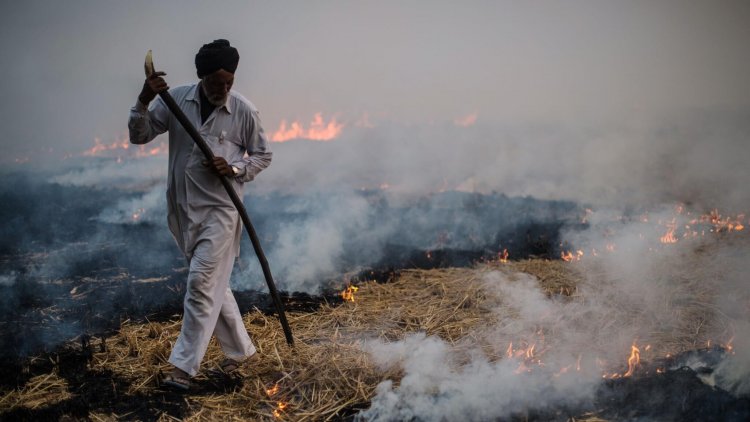Straw burning breaking havoc on environment

In an era where environmental problems are being seen as mammoth task, farmers in several Indian states are unaware of the consequences when they burn residue of the crop, also known as crop residue burning (CRB) as it saves money and emanates thick smoke. However, the menace it creates has no limit of devastation!

It not only affects biological cycle, but also environment by causing air pollution, and does not have significant impact on yield. The ashes of the crop fill the soil with minerals such as phosphorus to produce the subsequent crop, but the fact is that it has more bad than good impact.
“I have been doing organic farming and totally against of this kind of immature farming for money. Due to burning stubble, temperature rises, and it kills symbiotic organisms. People should be aware of the drawbacks of burning crops residue,” said Punit Verma, an organic farmer in Sehore, Madhya Pradesh.
As The Telegraph reported, Bengal government has banned stubble burning under Air (Prevention and Control of Pollution) Act, 1981 and the violators will be prosecuted. The order came when in recent years few states such as Punjab, Haryana, UP had also put a ban on CRB.
Cities like Delhi are facing crisis due to air pollution leading it to become one of the worst cities in air pollution index. The one of its kind report by International Food Policy Research Institute (IFPRI) stated that India causes air pollution worth Rs 2 lakh crore annually due to CRB. The study which was conducted by US-based researchers found that living in a habitat where air is polluted due to CRB; risk of acute respiratory problems, majorly in children below five years of age is severe.

“We can get rid of the problem if we start spreading awareness among farmers about CRB and its adverse effects on health, environment, and economy,” Punit added.
Decades ago when there was no equipment available, farmers started burning crops residues – smoke of which contains carbon monoxide, carbon dioxide, and other hazardous gases, but these days farmers are equipped with various options to sweep the remains instead of burning it, he added.
The practice of burning stubble has been seen in northern India in last decade and Delhi and the Centre have held the CRB accountable for poor air quality during winter in the capital city.
National Green Tribunal, in 2013, had issued a directive to few northern states including Punjab, Haryana, and Uttar Pradesh asking the governments to ban CRB. Stubble burning was estimated to emit particulate matter load in Delhi, which is around 78 per cent due to which environment ministers and officials concerned in UP declared a zero-tolerance policy on it.
In Madhya Pradesh too, the previous regime has put a ban on stubble burning, but the practice is still prevalent in several parts of the state; neglecting future impacts on the upcoming progeny.
“Rotavator is an equipment that can be used to remove stubble after harvesting crop, but as it is quite expensive, farmers do not agree to opt it. There is one more option to deal with the situation wherein the farmers can simply leave the stubble as it is, to let the micro-organisms decompose it and convert it into organic fertilizer. Though this process is time consuming, it is very efficient and effective,” said Mr Verma.















































